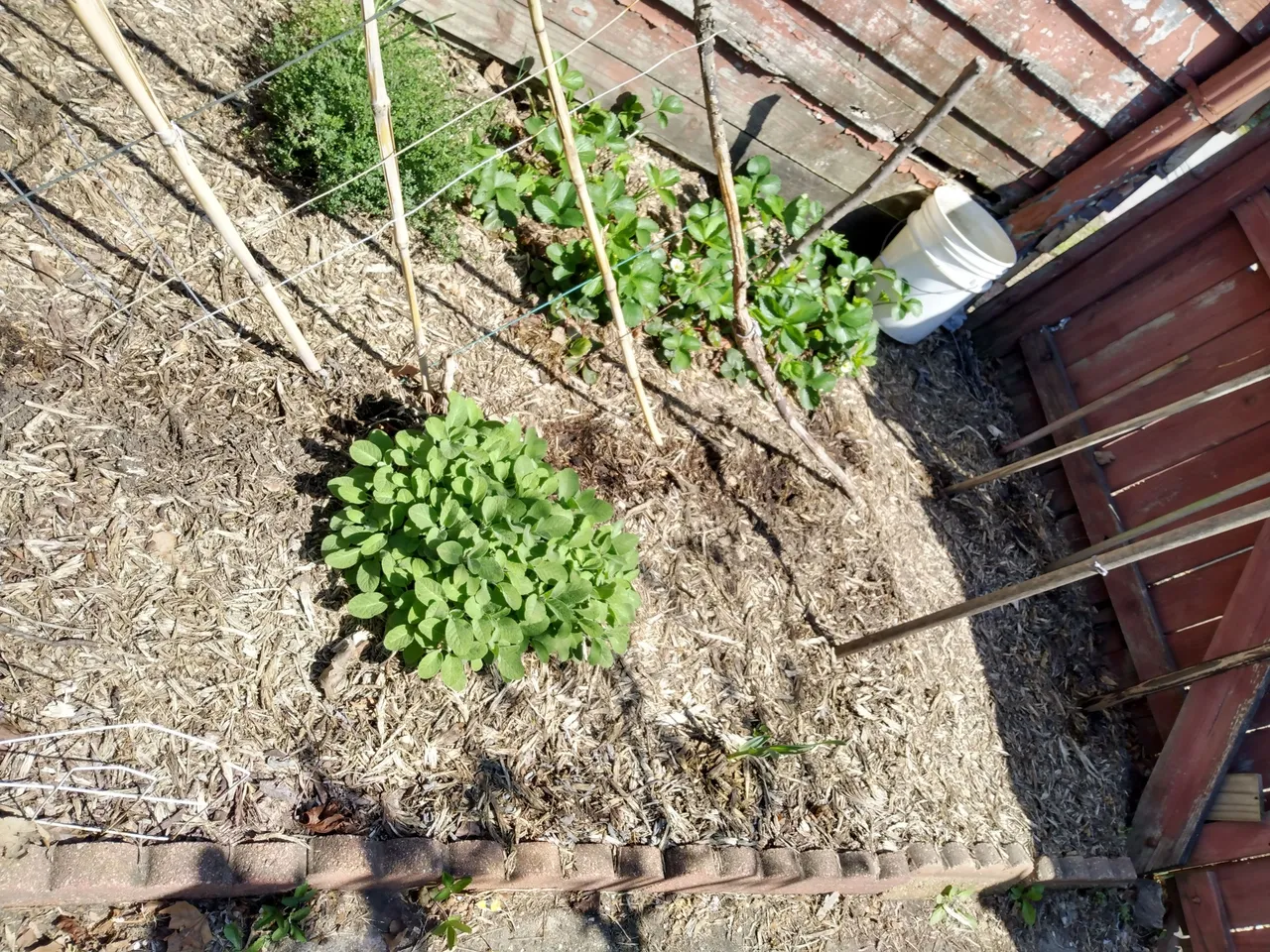
Greetings! The days are mostly warm now and now that I put some plants in the ground I feel like my headstart has worn off. The picture above is the east side of the garden, where hardly anything is planted yet besides strawberries, thyme, and sage which are all perennial. This is the side I'm going to fill with beans!
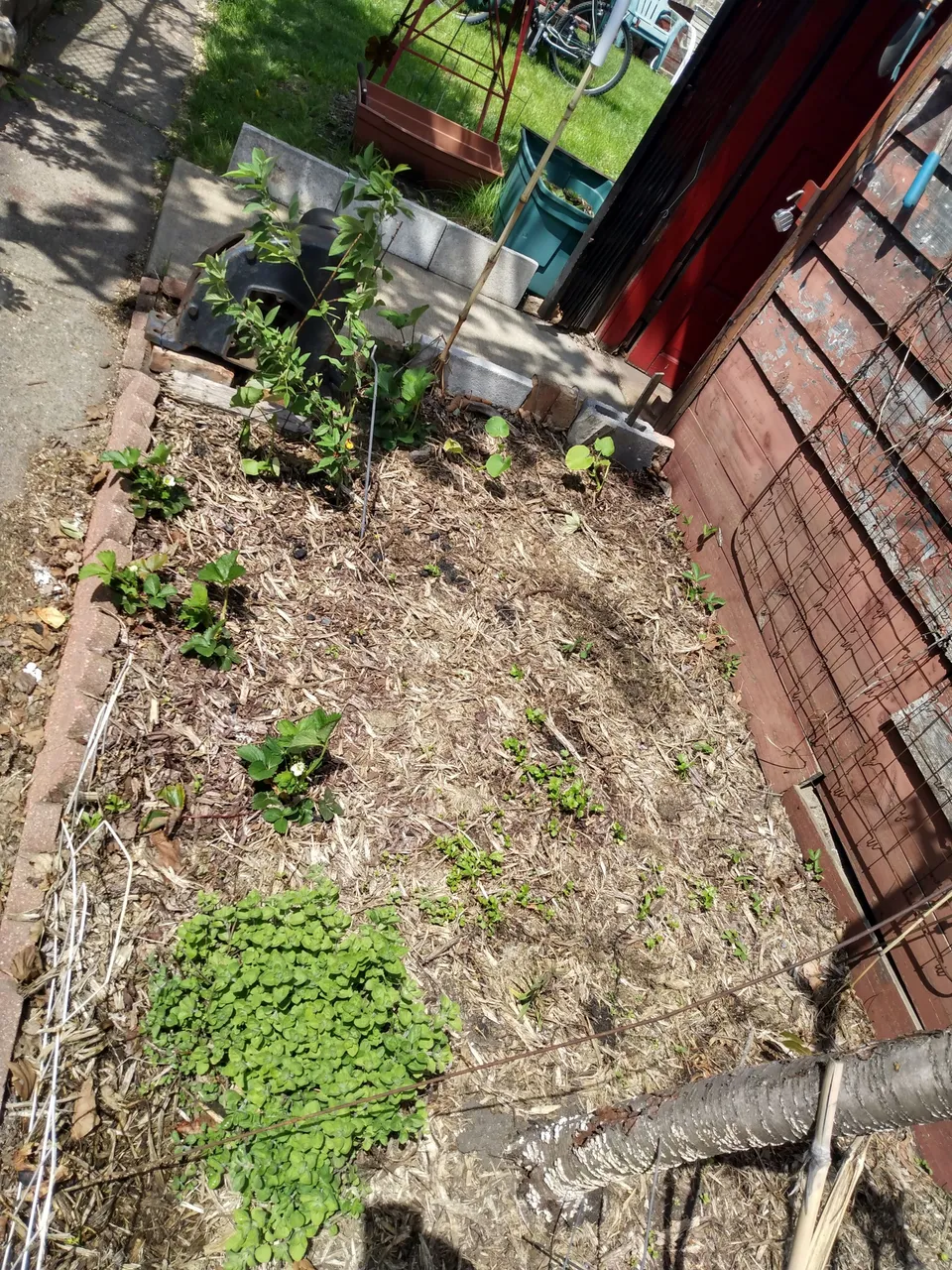
The west side is starting to take shape. The oregano (in the foreground) sits in the middle. In the background you can see the big pigeon pea plant along with my small pumpkin plants. They all took to transplanting very well.
The pigeon pea needed support since it had grown so tall over the winter indoors. Indoors, there is no wind to put stress on the main trunk so the plant was very floppy and prone to snapping had I not secured it to some wire salvaged from election advertisements.

The plant has been in bloom for weeks now, dropping most flowers and with only a few pods. Now that it is out of its tiny pot, I'm certain it will grow even taller and make even more flowers!
Now that we're on the subject of beans, this is how I start them.
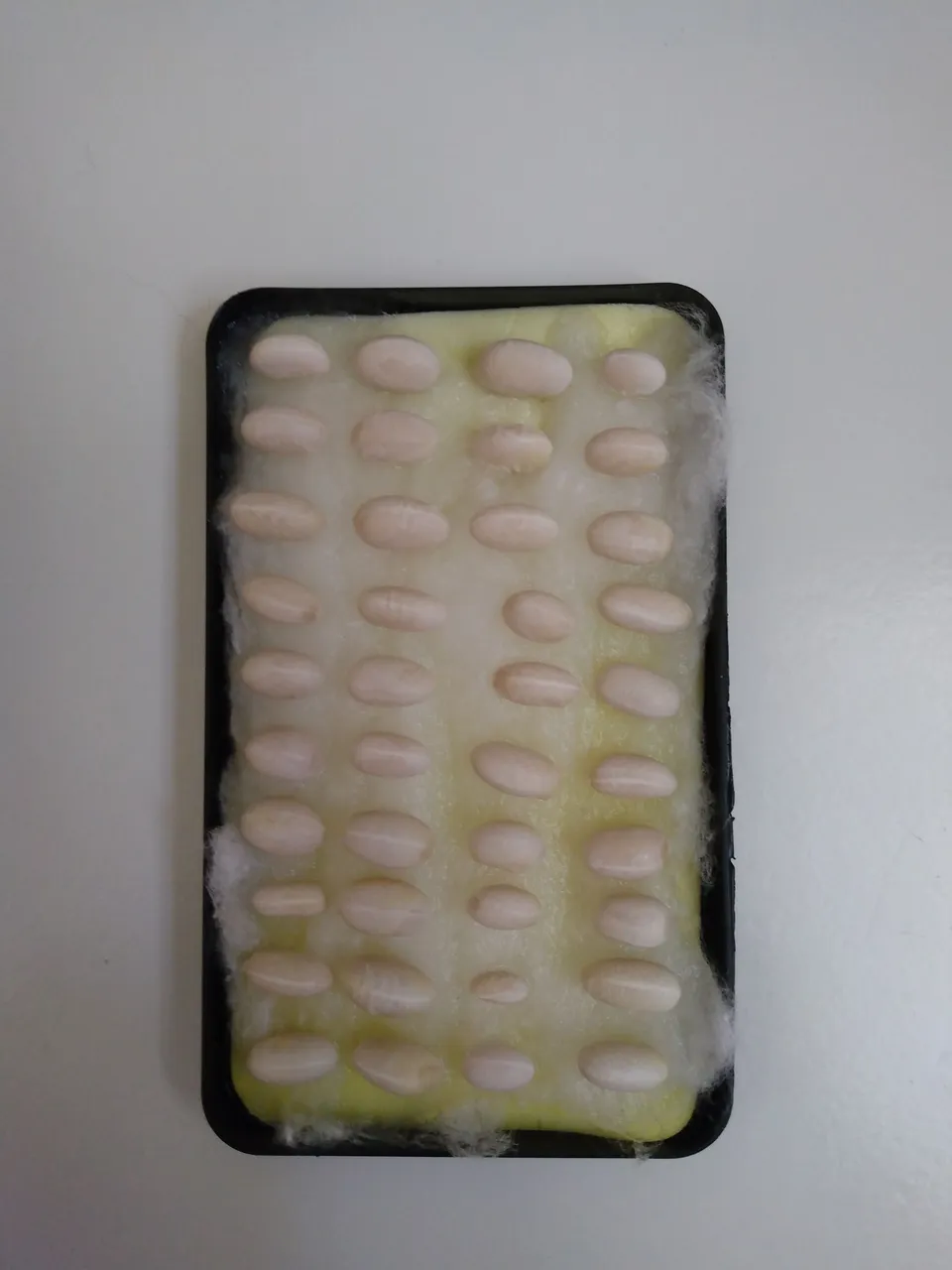
I put them with the 'eye' face down on some damp cotton in an airtight container. There's a pore near the eye that absorbs water, so there's no need to soak the entire bean for hours in water. This way you avoid drowning the bean and you can also see the moment when they sprout and that first little rootlet appears. That is very satisfying. Then you can plant them directly in soil. Don't forget to add a little bit of pea/bean inoculant at the time of planting! It usually comes in small granules that contain beneficial bacteria that aid the bean in fixing atmospheric nitrogen into fertilizer!
Another tip: don't plant your beans next to onions or garlic and these plants naturally kill this beneficial bacteria.
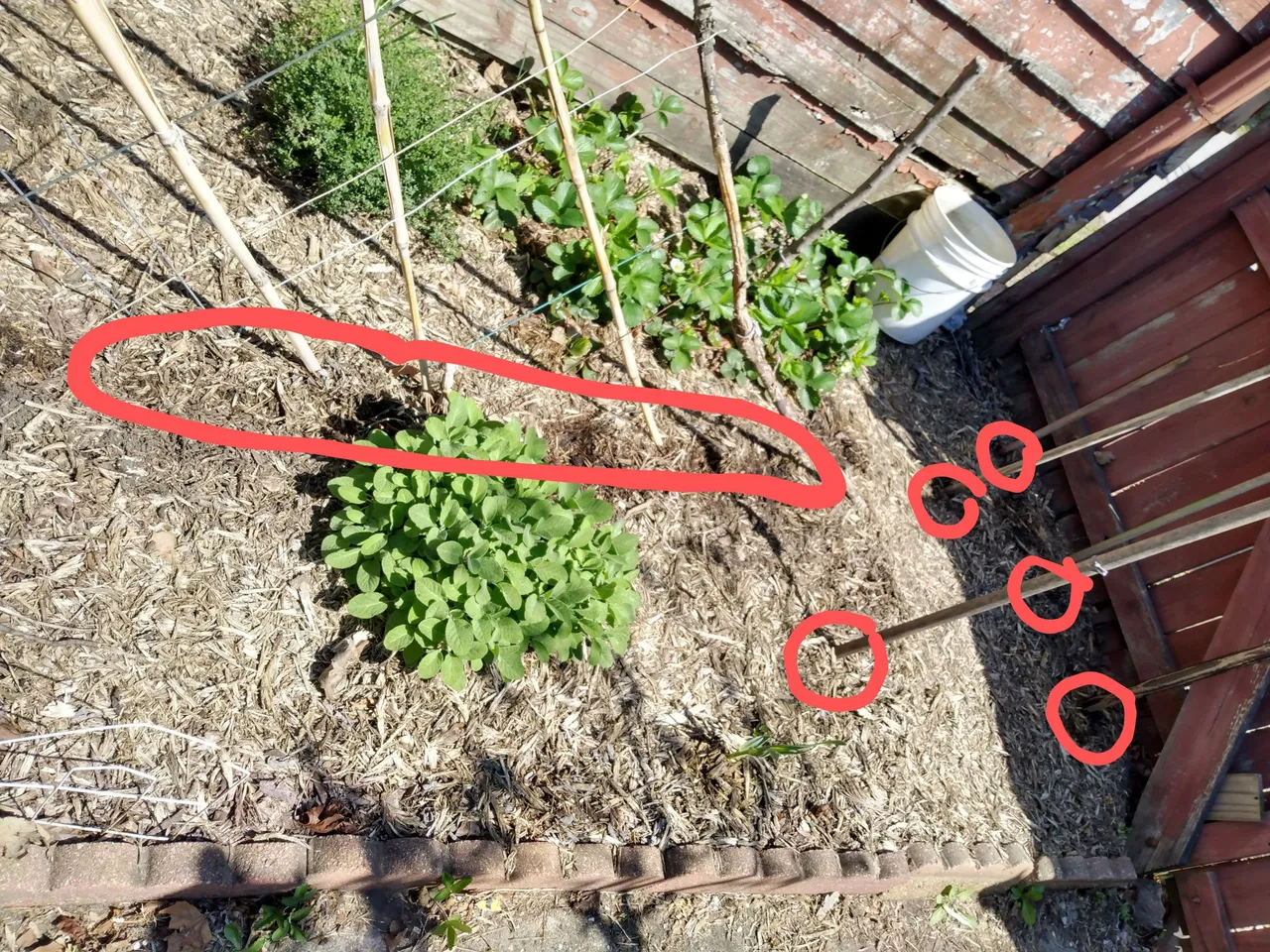
The 40 beans that I prepared all swelled and sprouted in around 2 days. The marked areas are where I planted them all. Since they are pole beans, they will climb up all the poles I planted them near.
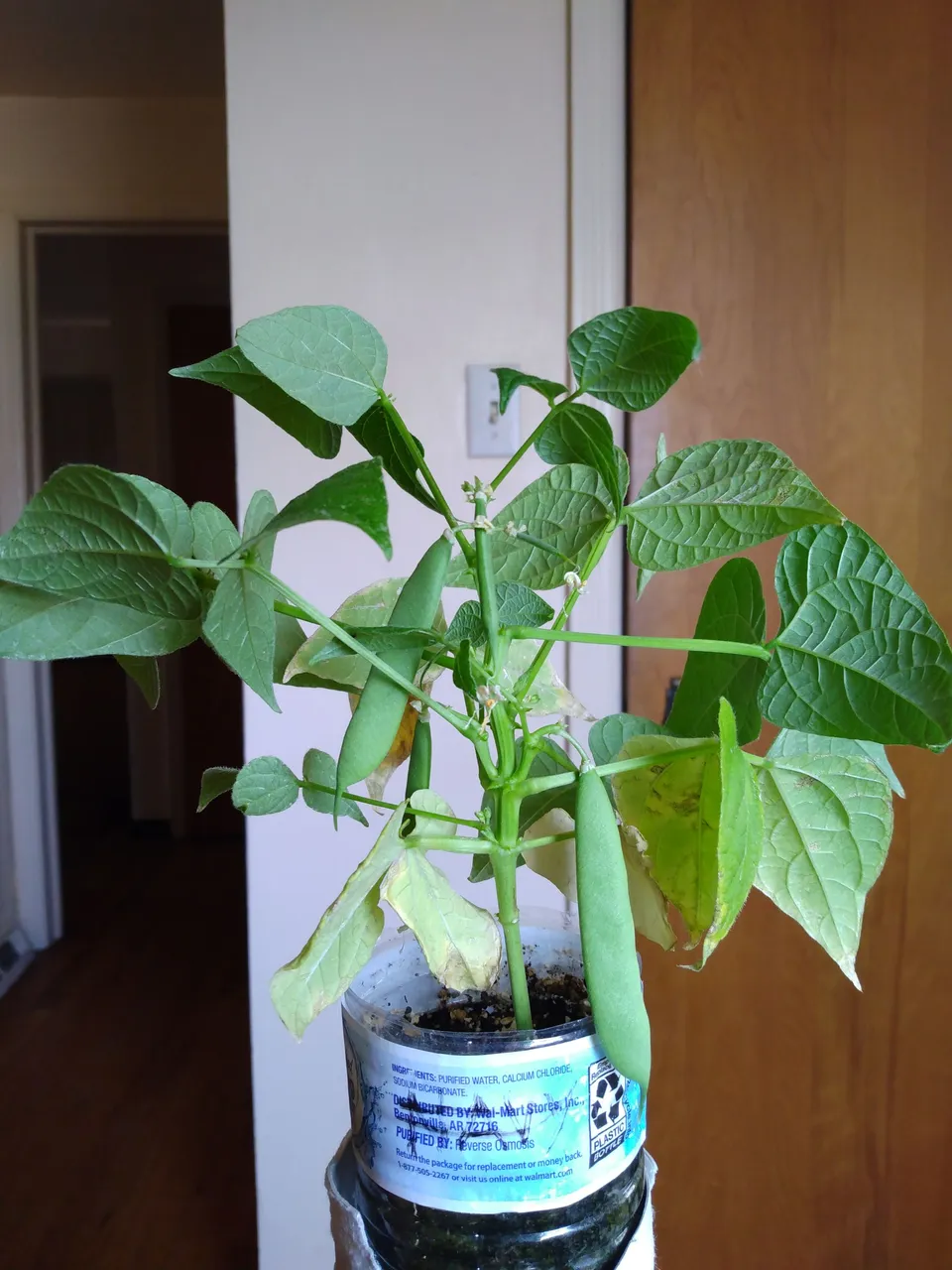
The interesting thing about these white mutant pinto beans is that, when confined to a small container, they will grow as a bush type.
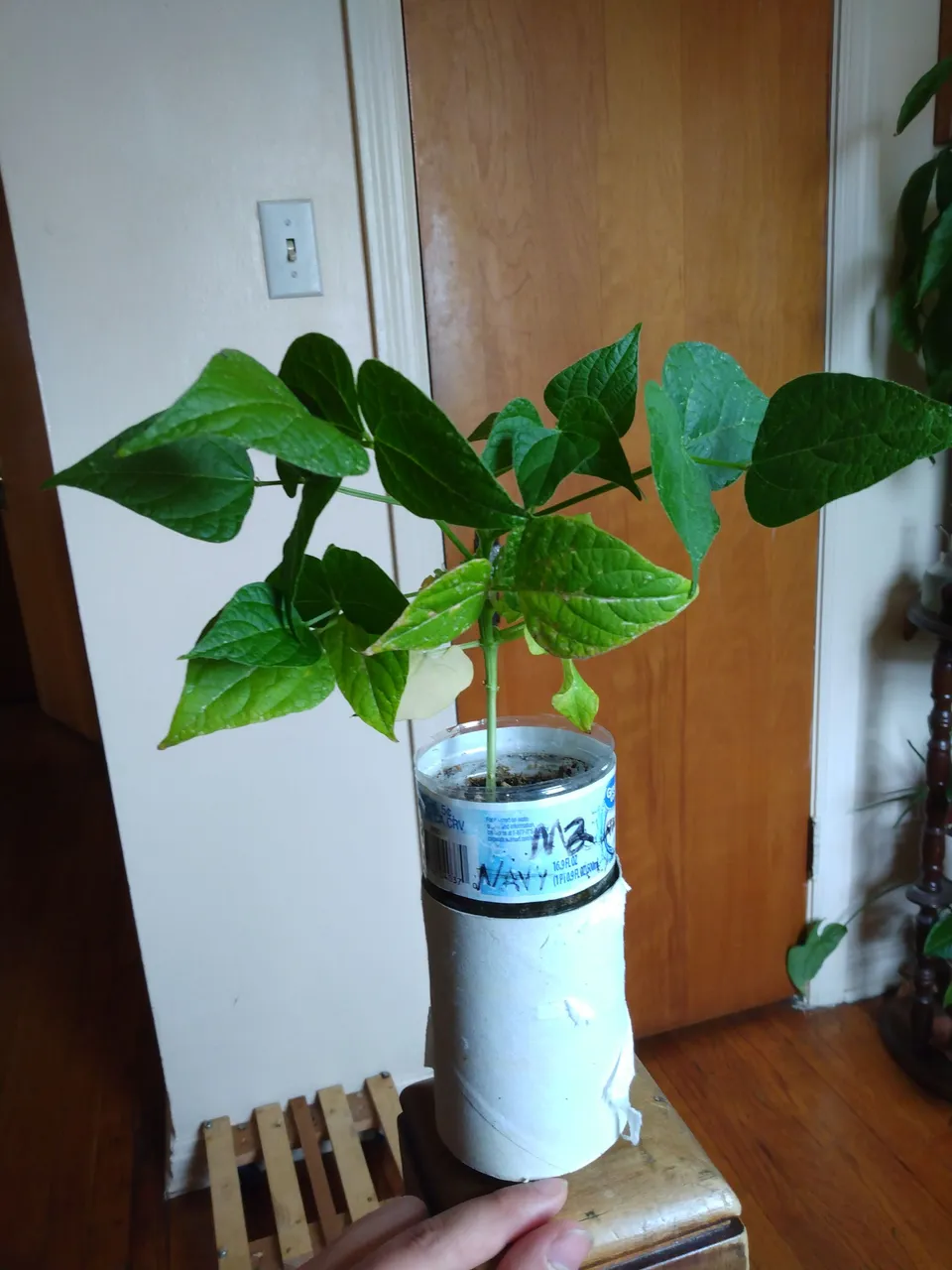
Their versatility is likely due to the fact that true pinto beans are actually half-pole, half-bush type beans.
That's why I like using them in experiments such as breeding smaller, more compact plants and my ongoing experiment to induce more mutations with mild radiation. The bean shown is part of the latter experiment.
I thought this bean was going to demonstrate infertility when I saw the flowers dying off in my last update.
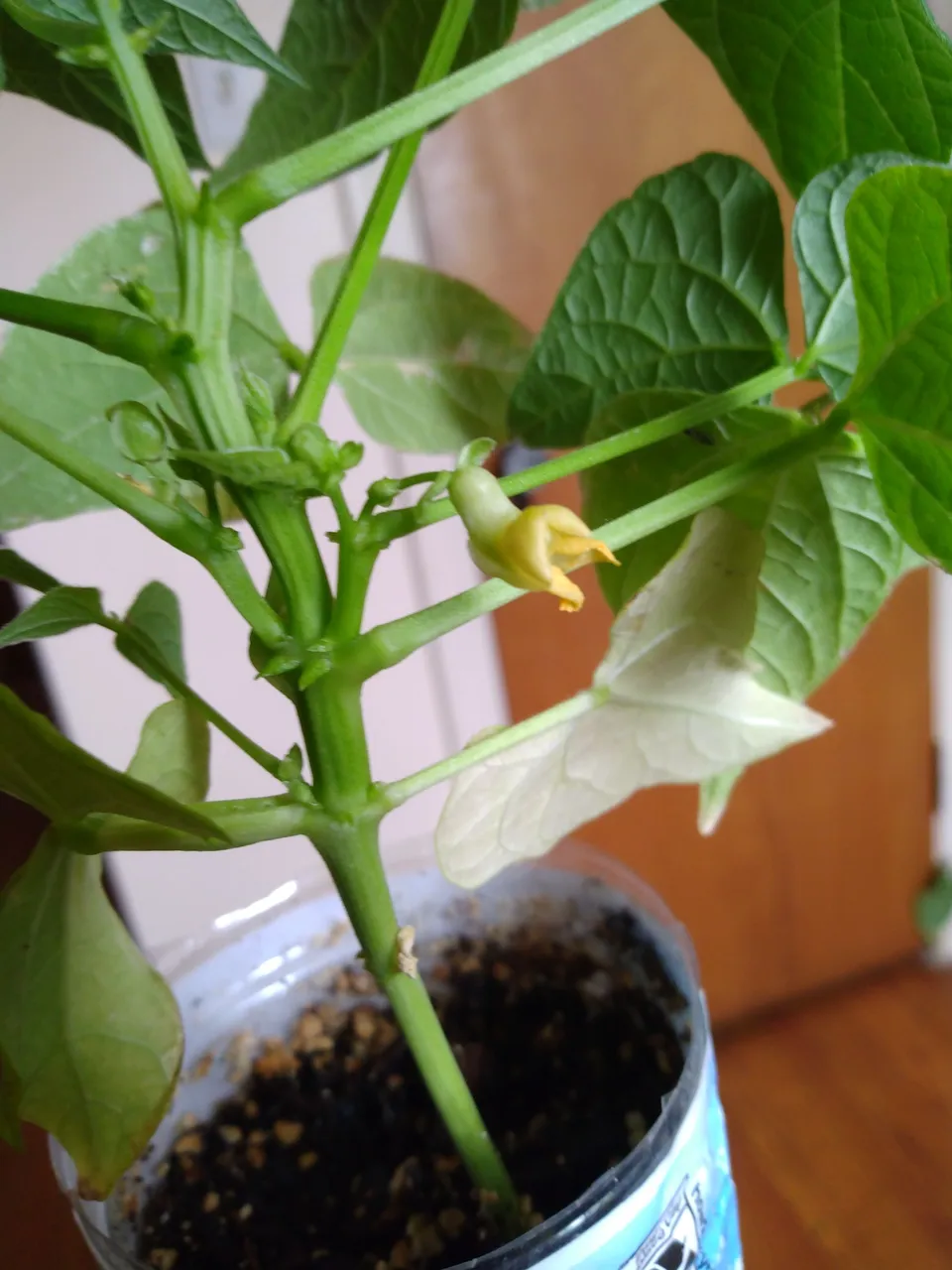
Flowers turn yellow when they are finished.
However, I was simply jumping to conclusions to soon because as you saw earlier the plant has 4 bean pods now. I was expecting more, since this plant comes from one that produced a whopping 9 pods.
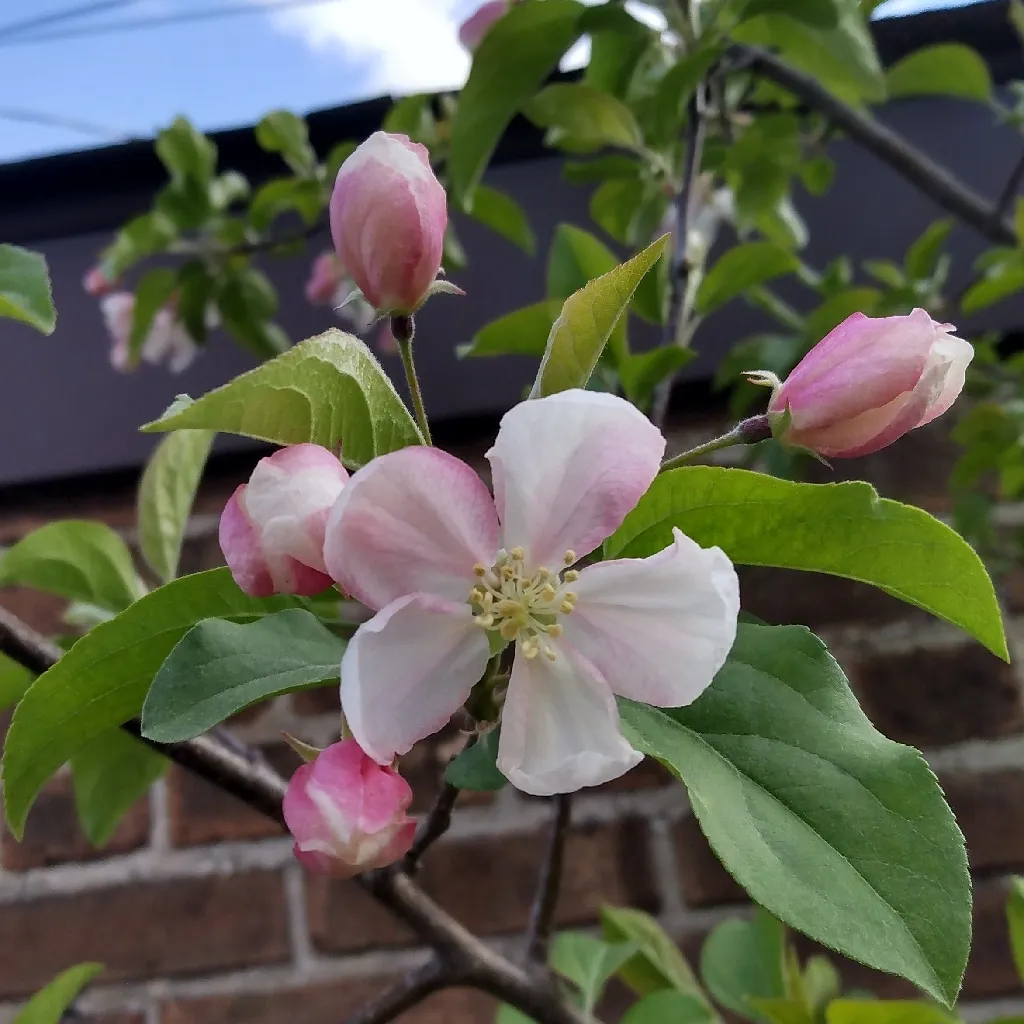
Right now is an excellent time of year for flowers! It makes me very happy to see everything in bloom, however, I have not seen very many bees at all. Hopefully they get their new colonies up and running and capitalize on all this abundance (and pollinate my apples)!
That is all for this update. I leave you with one last photo of a pretty bloom.
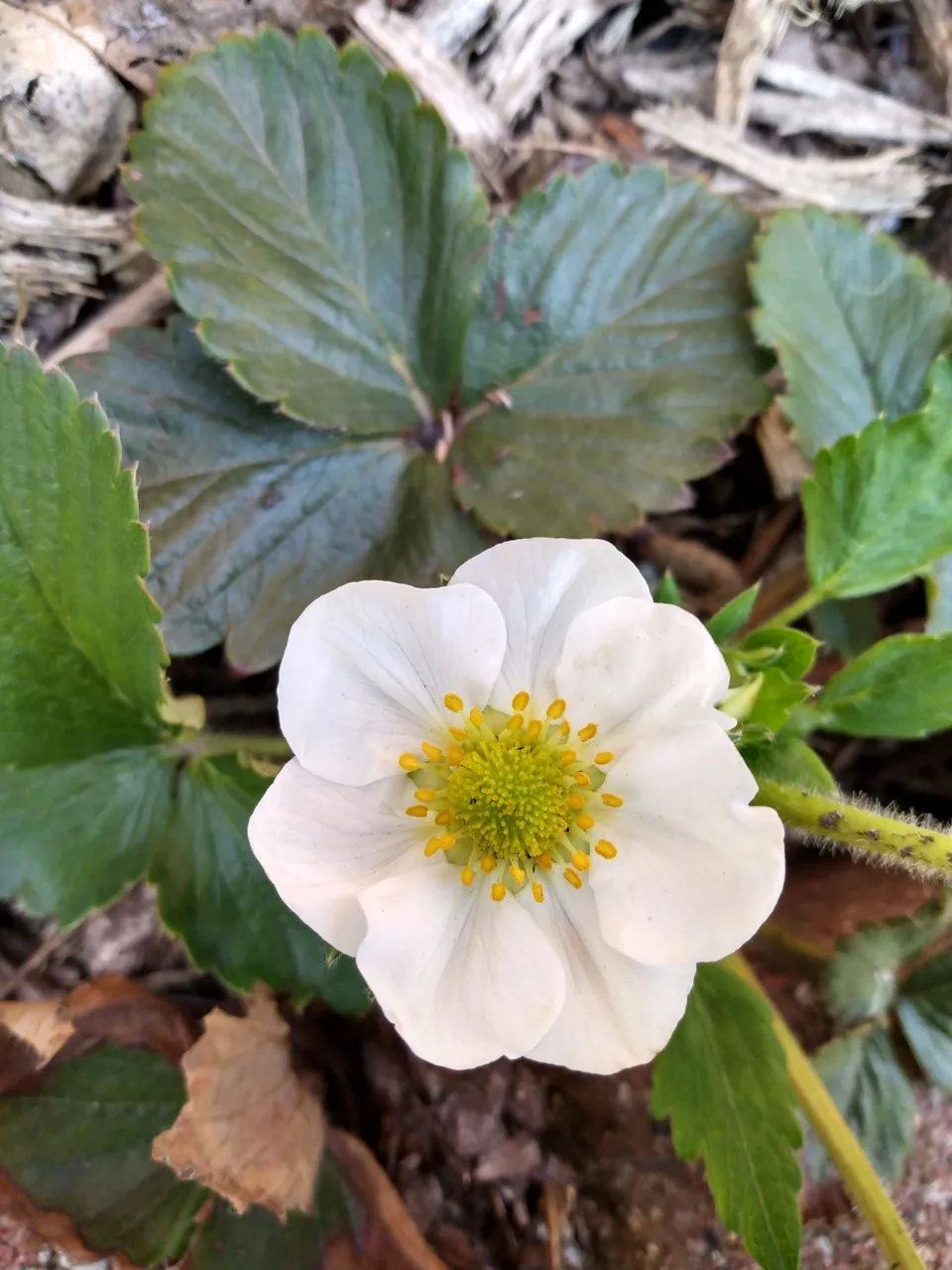
A strawberry flower.
Until next time!
